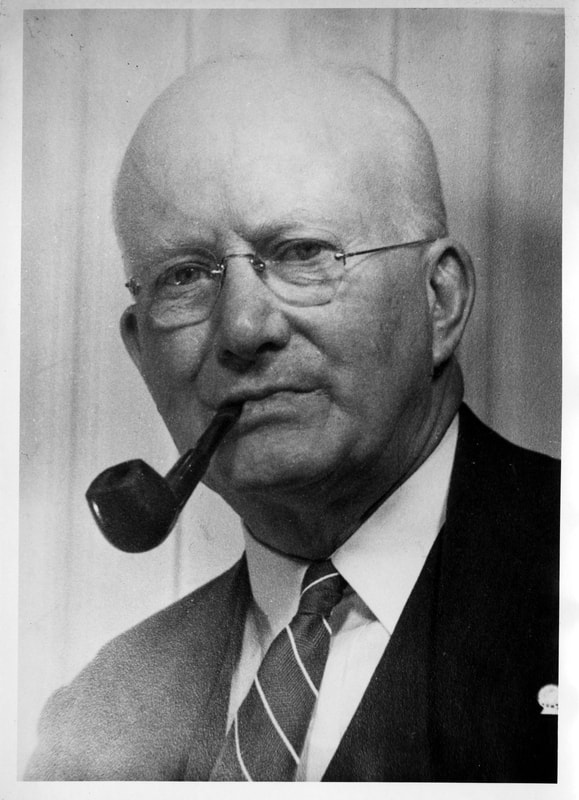
Ruel e. Davenport
Tenure: 1926-1927 – Northern Border, 1927-1932 – Both the Northern and Southern Borders
Learn More
Administration: Calvin Coolidge, Herbert Hoover
Ruel E. Davenport was an important figure in the early years of the Border Patrol. Originally beginning his career as Chief of the Detroit District, upon the agency’s founding in 1924, he would soon be appointed as the first chief of the Northern Border in 1926. By 1927, Davenport would become chief of the entire Border Patrol, overseeing both the South and Northern borders.

George J. Harris
Tenure: 1926-1927 – Southern Border, 1932-1933 – Mexican Border, Gulf, and Florida District
Learn More
Administration: Calvin Coolidge, Herbert Hoover, Franklin D. Roosevelt
George J. Harris was involved in border enforcement well before the Border Patrol’s official founding in 1924. As a Mounted Inspector for the Department of Labor and later a District Director for the Bureau of Immigration, he became deeply familiar with the day-to-day challenges along the border, especially in El Paso during Prohibition, when smuggling and illegal crossings were on the rise. He brought these concerns to Congressman Claude B. Hudspeth, who represented the El Paso area. Harris’s perspective helped Hudspeth grasp the scope of the problem and the need for a stronger, more unified effort on the border. He secured funding by attaching a rider to the 1924 Department of Labor Appropriations Act, which provided the resources to build a dedicated land border patrol. Harris continued to play a key role in shaping the new agency. He initially oversaw the territory that would later become the Tucson, El Paso, and Big Bend Sectors and went on to manage operations along the entire southern border. His work on the agency’s first ‘plan of action’ helped establish the Border Patrol’s policies, culture, and early identity.
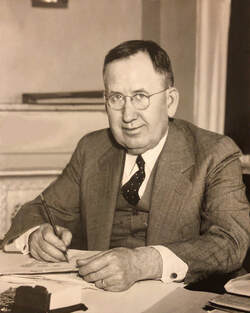
Frank W. Berkshire
Tenure: 1932-1933 – Canadian Border District
Learn More
Administration: Herbert Hoover, Franklin D. Roosevelt
Frank W. Berkshire, often called “The Father of the Border Patrol,” recognized the need for a dedicated border enforcement unit as early as February 1918, while working as a Chinese inspector for the Immigration Service in Chicago. By June of that year, he put forward his initial detailed plan for this “Border Patrol,” notably using capital letters for the name. Following further directives, Berkshire refined his concept to a 264-person force by November 1918, a proposal that gained approval and funding authorization later that month. After government discussions, the long-held vision came to fruition on May 28, 1924, when congressional funding allowed for the expansion of the Bureau of Immigration’s border patrol efforts, leading to the official establishment of the Immigration Border Patrol and the hiring of its first inspectors.
Later in his career, Berkshire served as Chief of the Canadian Border District from 1932 to 1933, shortly before his death on November 23, 1934. Some records also refer to him as “Supervising Inspector of the Mexico Border District.

Willard F. Kelly
Tenure: 1933-1943
Learn More
Administration: Franklin D. Roosevelt
Willard F. Kelly was the first Border Patrol Chief who began his career as a Border Patrol Inspector. He joined the U.S. Border Patrol on June 27th, 1924, in Vanceboro, Maine. He progressed through the ranks, serving in Maine and Vermont before becoming Chief Patrol Inspector of the Houlton Sub-District in 1931.
On November 17th, 1933, Kelly was appointed Supervisor (later “Chief”) of the Border Patrol, overseeing the unification of the Northern and Southern border districts. He was permanently promoted to this role on July 1st, 1936.
During his tenure, Kelly established the Border Patrol Training School (later the U.S. Border Patrol Academy) in 1934 and guided the agency through significant events, including the end of Prohibition, the beginning of World War II, and the transfer of the Immigration and Naturalization Service (including the Border Patrol) to the Department of Justice in 1940. He also oversaw the agency during the implementation of the Nationality Act of 1940 and the start of the Bracero Program in 1942. Willard F. Kelly retired from the U.S. Border Patrol in 1943.
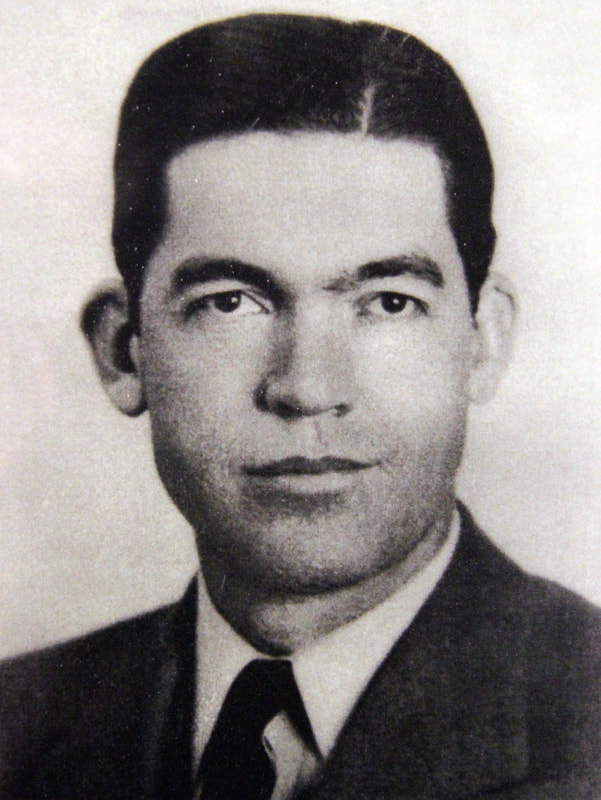
John W. Nelson
Tenure: 1943-1948
Learn More
Administration: Franklin D. Roosevelt, Harry S. Truman
John W. Nelson became Acting Chief of the Border Patrol on October 13, 1943, during a time of high turnover and growing national security concerns brought on by World War II. He was the first to serve entirely under the Department of Justice, following the 1940 transfer of the Immigration and Naturalization Service from the Department of Labor—a shift that reframed immigration as a national security issue.
During his tenure, Congress passed the Magnuson Act, repealing the long-standing Chinese Exclusion Act of 1882. Alongside the earlier Nationality Act of 1940, this legislation shaped how the Border Patrol operated during and after the war.

Nicolas Donald Collaer
Tenure: 1948-1950
Learn More
Administration: Harry S. Truman
Nicolas Donald Collaer entered federal service in 1922 as an Immigration Inspector. By 1926, Collaer was designated Acting Chief Patrol Inspector, and in 1928, he was promoted to Assistant Superintendent of the Border Patrol.
During World War II, he served as Supervisor of Alien Detentions for the POW camps at Fort Missoula (Missoula, Montana), Crystal City (Crystal City, Texas), and Pine Grove (Philadelphia, Pennsylvania), as well as the Fort Lincoln camp (Bismarck, North Dakota).
Collaer served as Chief of the Border Patrol from May 1948 to August 1950, overseeing the agency’s 25th anniversary.
While proud of his federal service and the decisions he made, Collaer later in life referred to the internment of Japanese-Americans during World War II as a ‘mistake’.
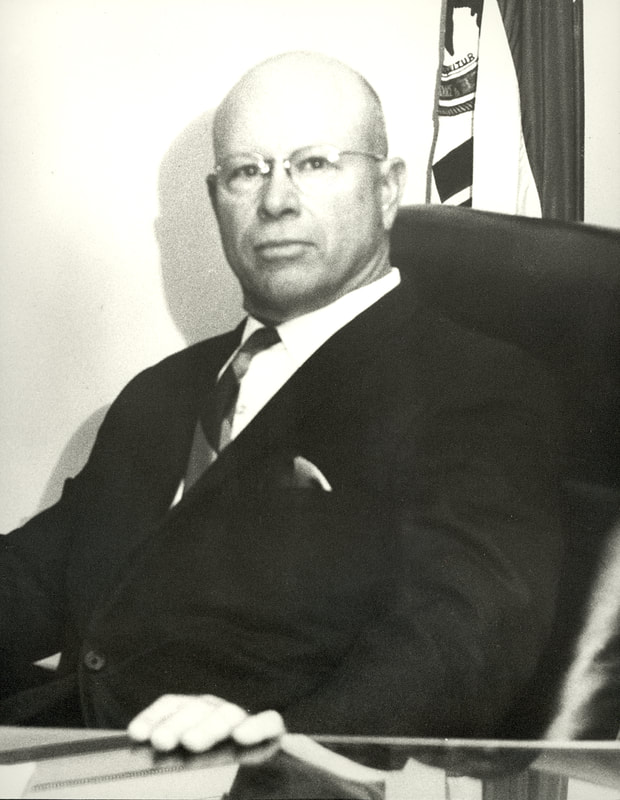
Harlon B. Carter
Unnumbered Session
Tenure: 1950-1957
Learn More
Administration: Harry S. Truman, Dwight D. Eisenhower
Harlon B. Carter began his career with the U.S. Border Patrol in 1936 after graduating from both the University of Texas and the Emory University School of Law. Following in the footsteps of his father, who also served in the Border Patrol, Carter also holds the distinction of being the first Chief to have attended the Border Patrol Academy.
Carter advanced through the ranks to become Chief of the Border Patrol in 1950, a position he held until 1957. It was during his time as Chief that he oversaw the implementation of Operation Wetback in 1954.
After his tenure as Chief, Carter continued serving with the Immigration and Naturalization Service, leading the Southwestern region from 1961 until his retirement in 1970.

James F. Greene Sr.
11th Session
Tenure: 1957-1959
Learn More
Administration: Dwight D. Eisenhower
James F. Greene entered duty with the U.S. Border Patrol in 1941, following his graduation from the agency’s 11th Academy session. His first duty station was with the Horse Patrol in Amado, Arizona. Over the course of his career, Greene also served in upstate New York, Minnesota, and Washington, D.C.
Greene served as Chief of the Border Patrol from 1957 to 1959. During his time, Greene emphasized both expanding field patrol efforts and improving procedures for lawful entry.
He continued to serve the Immigration and Naturalization Service in senior leadership roles, becoming Associate Commissioner in 1968 and later holding the position of Deputy Commissioner through much of the 1970s.

Donald R. Coppock
7th Session
Tenure: 1960-1973
Learn More
Administration: Dwight D. Eisenhower, John F. Kennedy, Lyndon B. Johnson, Richard Nixon
Donald R. Coppock, a graduate of the Border Patrol’s 7th Session, holds the distinction of being its longest-serving Chief, leading the agency from the final year of Eisenhower’s presidency through the Kennedy and Johnson administrations, and well into Nixon’s term. His tenure oversaw many notable events, such as the Riot at Ole Miss, the bombing of the Baptist Church in Birmingham, and the delicate negotiations for the release of Bay of Pigs prisoners. A founding member of the FORBPO (The Fraternal Order of the Retired Border Patrol Officers) and an Emeritus member of the Border Patrol Museum’s Board of Trustees, Chief Coppock passed away in 2011 at the age of 100.

Robert L. Stewart Sr.
35th Session
Tenure: 1973-1977
Learn More
Administration: Richard Nixon, Gerald Ford, Jimmy Carter
Robert L. Stewart Sr., a graduate of the 35th Border Patrol Academy session, became Chief of the Border Patrol on July 1, 1973. Early in his tenure, the Nixon Administration proposed moving INS, including the Border Patrol, into U.S. Customs—a plan that was ultimately dropped due to concerns over staffing and rising challenges along the border.
Later that year, the first Newton-Azrak Award was presented to honor fallen Border Patrol officers. In 1974, the Patrol marked its 50th anniversary, receiving official recognition from President Nixon and other national leaders. In 1975, Stewart oversaw the integration of the first female agents into the agency with the 107th Academy session. He retired in 1977.

Robin J. Clack
22nd Session
Tenure: 1977-1978
Learn More
Administration: Jimmy Carter
In 1959, Robin J. Clack graduated from the Border Patrol Academy’s 22nd session and began his career in Laredo, Texas, as a Border Patrol Inspector. He served as director of the Border Patrol Academy for two years before transferring to headquarters in Washington, D.C in 1959. In 1975, Clack was appointed Assistant Commissioner of the Immigration and Naturalization Service. Though he retired in 1977, he came back to serve six more months as Associate Commissioner and Chief of the Border Patrol, before stepping down for good in 1978.

Donald C. Day
70th Session
Tenure: 1978-1979
Learn More
Administration: Jimmy Carter
Donald C. Day graduated from the Border Patrol Academy’s 70th Session and began his career with the U.S. Border Patrol in 1957 in Harlingen, Texas. From 1962 to 1973, he held the roles of General Investigator, Criminal Investigator, and Supervisory Criminal Investigator, with assignments in San Juan, Puerto Rico; Washington D.C.; New York City, New York; and San Pedro, California. In 1974, Day transferred to San Diego, CA, as ADD/TC and was promoted to ARC/Enf. in 1976. In March 1978, Donald C. Day was appointed Chief of the Border Patrol, a position he held until June 1979. Upon his retirement, he had completed 30 years of government service.
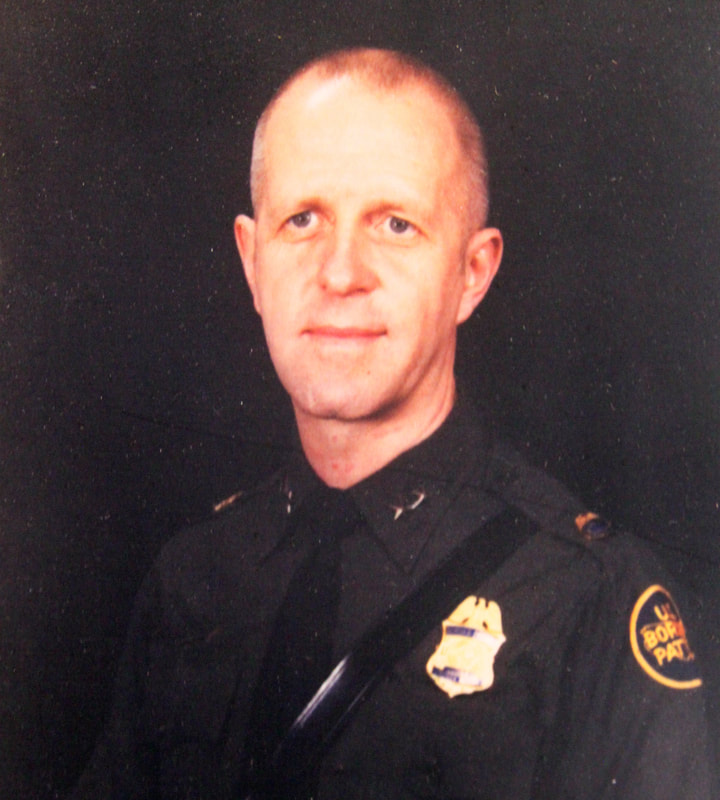
Roger P. “Buck” Brandemuehl
66th Session
Tenure: 1980-1986
Learn More
Administration: Jimmy Carter, Ronald Reagan
Roger “Buck” Brandemuehl began his career with the U.S. Border Patrol in 1956 in Yuma, Arizona.
Over the next three decades, Brandemuehl would go on to serve in a wide range of leadership roles such as Assistant Officer-in-Charge, Assistant District Director for Investigations, Supervisory Patrol Agent, Intelligence Officer, and Deputy Chief Patrol Agent.
In 1980, Brandemuehl was appointed Chief of the U.S. Border Patrol, a position he held until 1986. Under his tenure as Chief, he established the Border Patrol Tactical Unit (BORTAC) and oversaw the agency’s response to the Mariel Boatlift.
Today, Brandemuehl continues to contribute to the legacy of the Patrol. He serves on the Board of Trustees for the National Border Patrol Museum and Memorial Library Foundation and remains an active member of the Fraternal Order of Retired Border Patrol Officers.
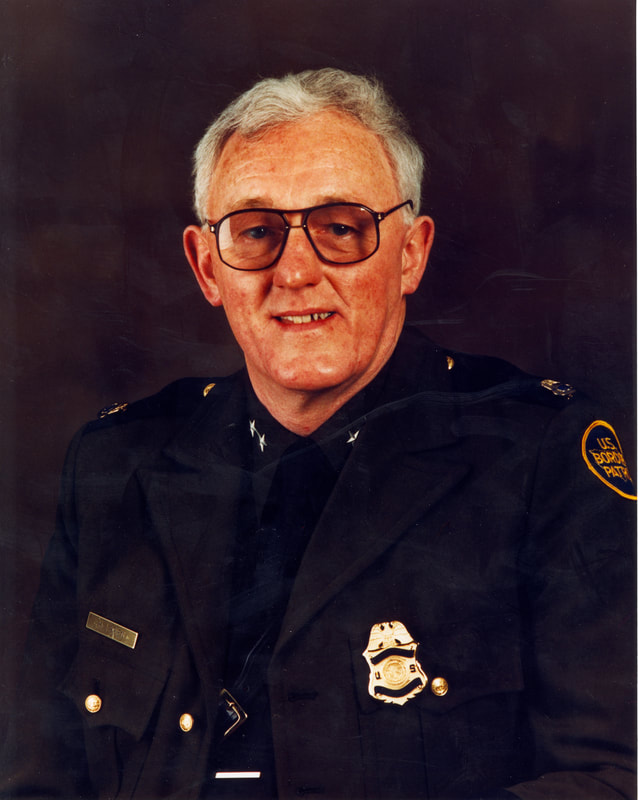
Hugh J. Brien
73rd Session
Tenure: 1986-1989
Learn More
Administration: Ronald Reagan
Hugh Brien entered the Border Patrol Academy in 1959 as part of the 73rd Session and began his career as a Patrol Inspector in the El Paso Sector. He later served in the Rio Grande Valley Sector and worked as a Deportation Officer in Chicago from 1966 to 1972. After transferring to Washington, D.C., Brien served as a Special Agent in the Field Inspections and Security Division (1972–1974) and as Chief of Detention and Deportation from 1978 to 1986.
In 1986, he was appointed Chief of the U.S. Border Patrol—the first naturalized U.S. citizen to hold the position. He retired in 1989 at the end of the Reagan administration.
His Border Patrol Chief uniform is now displayed at Garda Síochána College in Templemore, Ireland.

Michael S. Williams
89th Session
Tenure: 1990-1995
Learn More
Administration: George H. W. Bush, Bill Clinton
After graduating from the 89th Session of the Border Patrol Academy in 1967, Michael S. Williams began his career in Comstock, Texas.
Over the next two decades, he rose through the ranks, holding key leadership positions including Patrol Agent in Charge of the Havre Station, Deputy Chief of the San Diego Sector, and Chief of the El Paso Sector. In January 1990, he became Chief of the U.S. Border Patrol.
During his time as Chief, the agency launched Operation Hold the Line in El Paso and Operation Gatekeeper in San Diego—two landmark initiatives that left a lasting impact on border enforcement strategy.

Douglas M. Kruhm
90th Session
Tenure: 1995-1998
Learn More
Administration: Bill Clinton
Douglas M. Kruhm joined the U.S. Border Patrol on October 3, 1967, after completing the 90th Session of the Border Patrol Academy. Over the course of his career, he held a range of leadership roles before being appointed Chief of the Border Patrol in 1995. While stationed in Washington, D.C., he was a strong advocate for Operation Blockade—later known as Operation Hold the Line—as well as Operation Gatekeeper.
He retired in 1998, concluding a 30-year career in federal service. In retirement, he remained closely involved in the Border Patrol community, serving on the Board of Trustees for the National Border Patrol Museum, including as Chairman.
Douglas M. Kruhm passed away on September 11, 2022, and is remembered as an Emeritus member of the museum’s board.
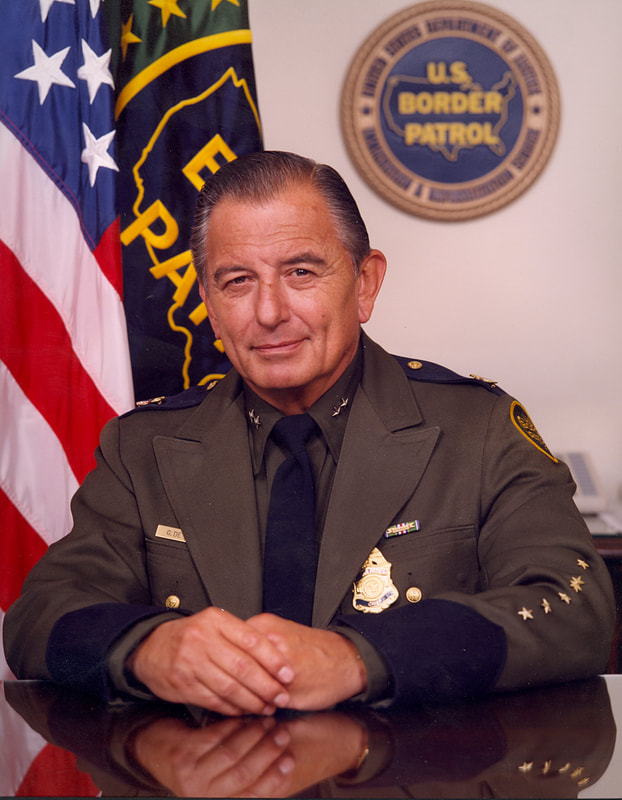
Gustavo De La Viña
96th Session
Tenure: 1998-2004
Learn More
Administration: Bill Clinton, George W. Bush
Gustavo De La Viña began his career with the U.S. Border Patrol in 1970 as part of the 96th Session. He was first assigned to Eagle Pass, Texas, and later served as a Spanish instructor at the Border Patrol Academy in Glynco, Georgia.
From 1984 to 1990, he served as Deputy Chief of the El Paso Sector before taking over as Chief of the San Diego Sector, where he led the implementation of Operation Gatekeeper. In 1995, he was named Western Regional Director for the Immigration and Naturalization Service (INS).
In December 1997, De La Viña made history as the first person of Hispanic descent to be appointed Chief of the U.S. Border Patrol. He served in that role until his retirement in 2004, during both the Clinton and George W. Bush administrations. His tenure included the creation of the Border Patrol Search, Trauma, and Rescue (BORSTAR) unit and the agency’s 75th anniversary celebration in San Diego in 1999.
De La Viña passed away in 2009 at age 70 while working as an ICITAP adviser in Bosnia-Herzegovina.

David V. Aguilar
122nd Session
Tenure: 2004-2010
Learn More
Administration: George W. Bush, Barack Obama
David V. Aguilar entered on duty with the U.S. Border Patrol in June 1978 in Laredo, Texas. Over the next two decades, he held key leadership posts, including Patrol Agent in Charge of the Dallas, Rio Grande City, and Brownsville Stations. He later served as Assistant Regional Director for Border Patrol in the Central Region of the Immigration and Naturalization Service (INS).
In 2000, Aguilar was named Chief Patrol Agent of the Tucson Sector, where he oversaw 261 miles of border and led major enforcement efforts, including Operation Desert Safeguard. Four years later, he was appointed Chief of the U.S. Border Patrol, commanding more than 12,000 agents across the country.
During his time as Chief, he also served as Border and Transportation Security Integrator for the Arizona Border Control Initiative. After retiring in 2010, Aguilar became the Duty Commissioner of U.S. Customs and Border Protection, and then the Acting Commissioner of CBP in 2012 before retiring from federal service in 2013.
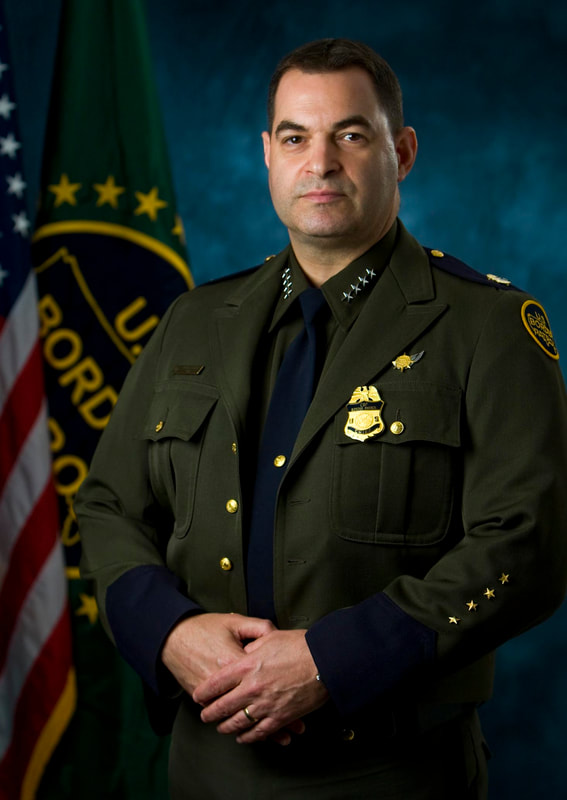
Michael J. Fisher
208th Session
Tenure: 2010-2015
Learn More
Administration: Barack Obama
Michael J. Fisher entered the U.S. Border Patrol in 1987 at the Tucson Sector’s Douglas Station. After completing BORTAC training in 1990, he served as BORTAC Field Operations Supervisor in El Paso, Texas, directing operations both within the U.S. and abroad.
Fisher later held several leadership roles, including Deputy Chief Patrol Agent in Detroit and Assistant Chief Patrol Agent in Tucson. In 2003, he was appointed Deputy Director for the Office of Anti-Terrorism within U.S. Customs and Border Protection, where he oversaw operations during periods of heightened security threats and coordinated with the intelligence community. He was promoted to Senior Associate Chief of the U.S. Border Patrol in 2004.
In 2006, Fisher became Deputy Chief Patrol Agent in San Diego and was promoted to Chief Patrol Agent in 2007. In 2010, he was named Acting Chief of the U.S. Border Patrol and officially took on the role in May. As Chief, Fisher developed a national border security strategy and helped define the Border Patrol’s role within Customs and Border Protection. He retired on November 30, 2015, after nearly thirty years of service.
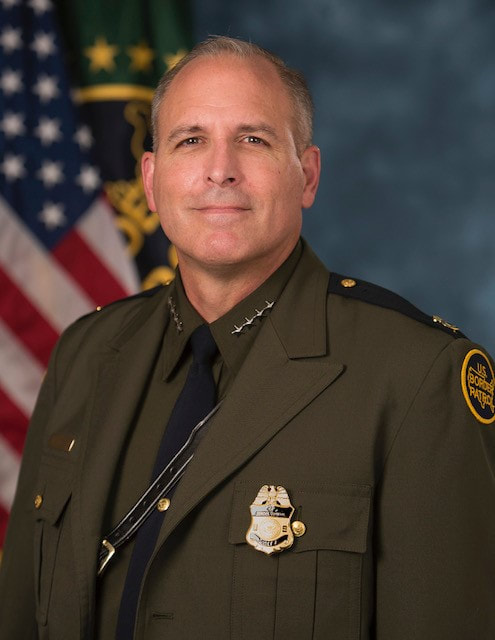
Mark A. Morgan
Tenure: 2016-2017
Learn More
Administration: Barack Obama, Donald J. Trump
Mark Morgan began his career with the FBI in 1996, working in the Los Angeles Field Office on tactical and gang-related units. Over the next two decades, he held a series of senior roles, including Assistant Section Chief of the FBI’s Behavioral Analysis Units, Deputy On-Scene Commander in Iraq, and Special Agent in Charge of the El Paso Division. He later served as Assistant Director of the FBI Academy in Quantico.
In 2014, Morgan was detailed to U.S. Customs and Border Protection as Acting Assistant Commissioner for Internal Affairs. Two years later, he became the first person from outside the agency appointed as Chief of the U.S. Border Patrol, a position he held from July 2016 to January 2017.
Morgan went on to serve as Acting Director of U.S. Immigration and Customs Enforcement (ICE) in 2019 and as Acting Commissioner of CBP from 2019 to 2021.
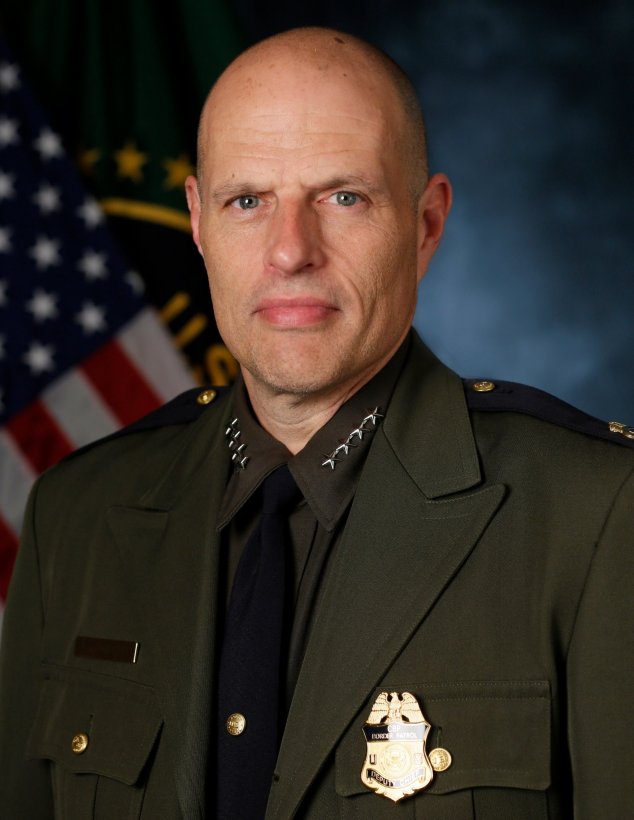
Ronald D. Vitiello
174th Session
Tenure: 2017-2018
Learn More
Administration: Donald J. Trump
Ronald D. Vitiello began his Border Patrol career in 1985 as part of the 174th Academy Session, with his first assignment in Laredo, Texas. Over the years, he took on various leadership roles, including Assistant Chief Patrol Agent and Senior Associate Chief, and served as Chief of both the Rio Grande Valley and Swanton Sectors.
In 2010, Vitiello became Deputy Chief of the Border Patrol, stepping in as Acting Chief from 2015 to 2016. He was officially appointed Chief on February 1, 2017. Following his tenure as Chief, he briefly served as Acting Deputy Commissioner of U.S. Customs and Border Protection and Acting Director of U.S. Immigration and Customs Enforcement before retiring in 2019.
After retiring, Vitiello joined Axon as Head of DHS Programs and Strategy. In January 2025, he returned to CBP as Senior Advisor.

Carla L. Provost
227th Session
Tenure: 2018-2020
Learn More
Administration: Donald J. Trump
Carla Provost began her Border Patrol career in 1995 as part of Class 277, with her first assignment in the Tucson Sector. She quickly took on leadership responsibilities, becoming a Supervisory Agent, then a Field Operations Supervisor, and served as an instructor in several key areas.
In 2006, Provost became an Assistant Chief Patrol Agent in the Yuma Sector and later led the Wellton Station. She went on to serve as Deputy Chief Patrol Agent in El Paso and, in 2013, became Chief Patrol Agent of the El Centro Sector. She moved to headquarters in 2015 as Deputy Assistant Commissioner of the Office of Professional Responsibility and was named Deputy Chief of the Border Patrol in 2016.
After stepping in as Acting Chief in April 2017, she made history in August 2018 when she was officially appointed the first woman to lead the agency. Provost retired in January 2020, closing out a 25-year career of service and leadership.
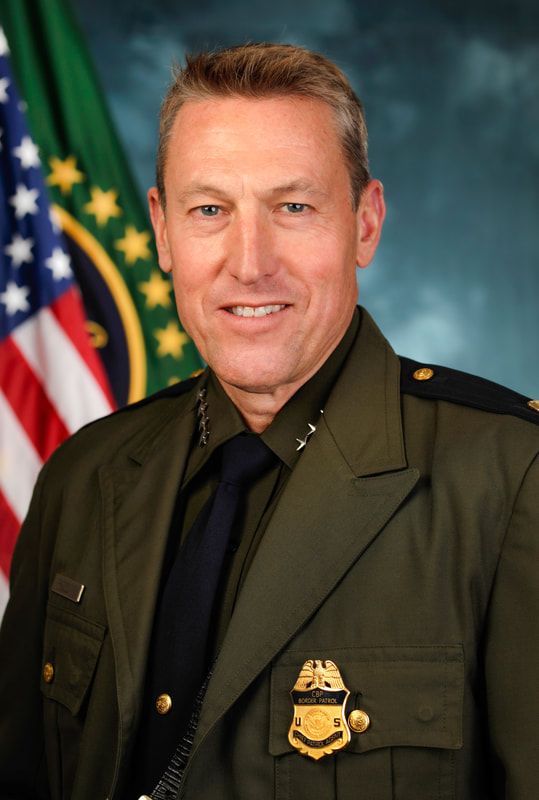
Rodney S. Scott
252nd Session
Tenure: 2020-2021
Learn More
Administration: Donald J. Trump, Joe Biden
Rodney S. Scott served in the U.S. Border Patrol for more than 29 years, becoming the agency’s 24th Chief on February 2, 2020. Scott began his career in 1992 at the Imperial Beach Station in the San Diego Sector. Over the years, he took on increasing leadership responsibilities across the southwest border, including roles as Supervisory Agent and Patrol Agent in Charge. Midway through his career, he was assigned to CBP Headquarters in Washington, D.C., where he worked on anti-terrorism and incident management efforts.
He later returned to the field as Deputy Chief Patrol Agent of the San Diego Sector in 2012 and went on to serve as Chief Patrol Agent in both the El Centro and San Diego Sectors.
As Chief, Scott led the Border Patrol through transitions under both the Trump and Biden administrations. Chief Scott retired on August 14th, 2021, with over twenty-nine years of experience in federal law enforcement and international border security. Twenty-four of those years were in progressive leadership positions in five different Presidential administrations and with nine years in the Senior Executive Service. After retiring in 2021, he joined the Texas Public Policy Foundation as a Distinguished Senior Fellow.
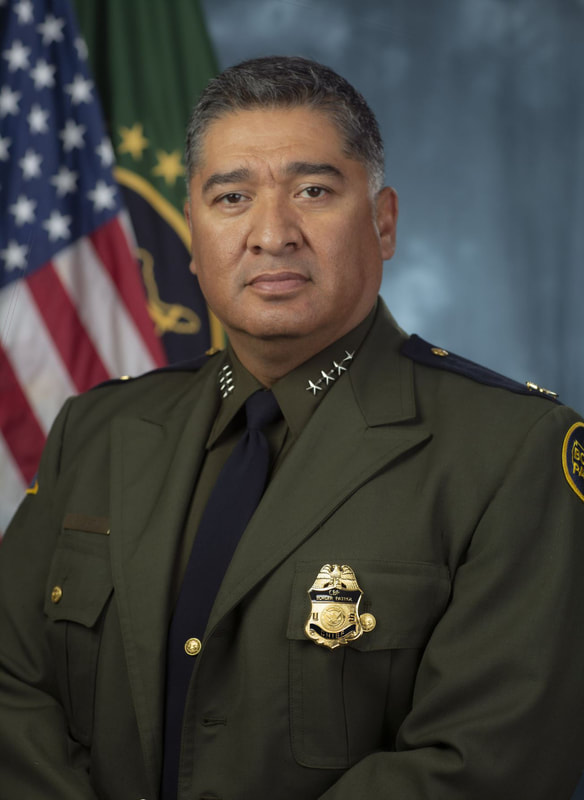
Raúl L. Ortiz
247th Session
Tenure: 2021-2023
Learn More
Administration: Joe Biden
Raúl L. Ortiz started his Border Patrol career in San Diego in 1991 after graduating from the 247th academy session.
Early on, he worked at stations like Chula Vista, gaining hands-on experience that would shape his leadership style. He later moved to the Del Rio Sector, where he stepped into leadership roles, overseeing patrol operations and serving as an Assistant Chief.
As his career progressed, Ortiz took on a wide range of assignments, including directing border management efforts and representing the Department of Homeland Security as its Attaché in Kabul, Afghanistan. He also played a key role at Border Patrol Headquarters, where he helped shape national law enforcement programs.
Returning to field leadership, he served as Deputy Chief Patrol Agent in the Rio Grande Valley Sector and later led the Del Rio Sector as Chief Patrol Agent. In 2020, Ortiz was named Deputy Chief of the U.S. Border Patrol, and on August 15, 2021, he became the agency’s 25th Chief.
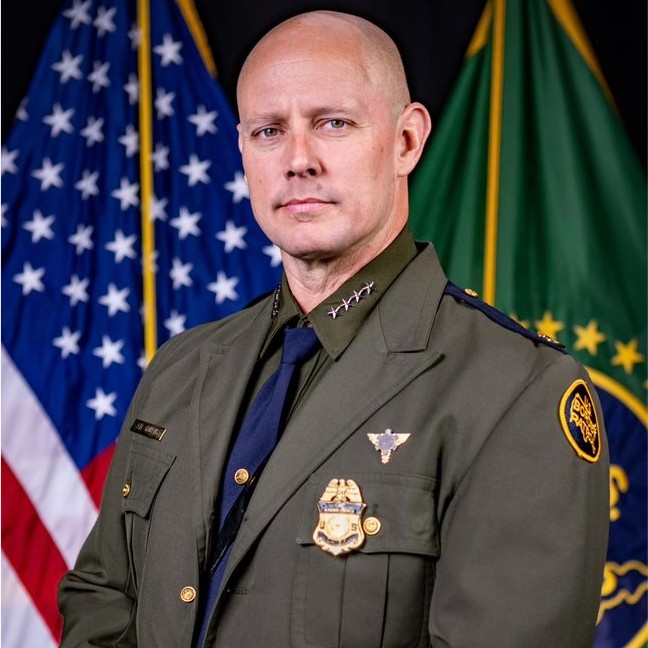
Jason D. Owens
325th Session
Tenure: 2023-2025
Learn More
Administration: Joe Biden
Jason Owens began his career with the U.S. Border Patrol in 1996, starting out in the El Centro Sector. Over the years, he served in nine different sectors and earned the rare distinction of completing both BORTAC and BORSTAR training in 2001. His leadership experience spans special operations, intelligence, and training, including roles as Assistant Chief at the Special Operations Division in Washington, D.C., and Chief of the U.S. Border Patrol Academy.
Since being appointed Chief of the U.S. Border Patrol in July 2023, Owens has focused on enhancing both operational strategy and agent support. He led the creation of the Targeting and Investigations Division to counter cartel activity and expanded the Resiliency Division to offer more robust physical and mental health resources to the workforce.

Michael W. Banks
424th Session
Tenure: 2025 – Present
Learn More
Administration: Donald J. Trump
In January 2025, Michael W. Banks took over as Chief of the U.S. Border Patrol after serving as Texas’s first Border Czar. He spent more than 30 years in federal law enforcement and dedicated 24 of those to border security, holding leadership roles in Texas, Arizona, and California. Banks led the Weslaco, McAllen, and Brownsville stations as Patrol Agent in Charge before moving up to Acting Deputy Chief at USBP Headquarters.
He began his career at the Calexico Station in 2000 and later worked in Nogales and Tucson, where he directed operations, such as the Checkpoint Taskforce, which fostered collaboration between the Border Patrol and the Office of Field Operation and Deputy Patrol Agent in Charge of Operations at the Ajo Station and, in 2016, became the Patrol Agent in Charge of the Brownsville Station in the Rio Grande Valley Sector.